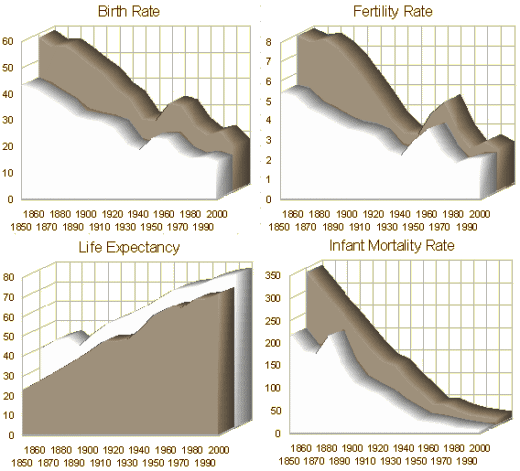
As I looked at the graphs, I thought they needed to be accompanied by the overall population for comparison. After I did them [World Population and U.S. Population], I found them less interesting than I planned. The shape of the U.S. Population graph was bland. It just went up. And it wasn’t the same as the World Population – neither its shape nor its "wiggles."
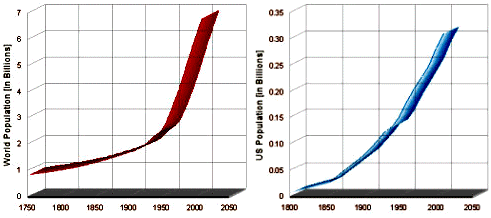
So, I expressed it as the U.S. Population divided by the World Population. It made a graph plenty worthy of perusing.
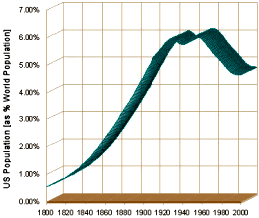
Give me your tired, your poor,
Your huddled masses yearning to breathe free,
The wretched refuse of your teeming shore.
Send these, the homeless, tempest-tost to me,
I lift my lamp beside the golden door!
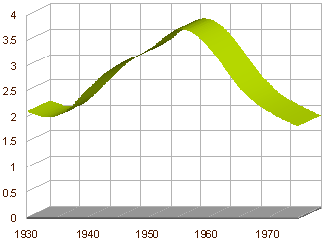 But this time, rather than immigration, a lot of our contribution was from what is called the "baby boom." And a boom it certainly was. It’s obvious that it was more than just a return to the pre-war fertility. It exceeded any extrapolation of previous fertility trends. But our usual way of thinking about it may be a bit distorted. We think that the soldiers came home and there was a period where people made up for lost time, then settled down. Well it sure went on for a long time – the twenty years from 1940 until 1960. We came close to doubling the fertility rate in those years.
But this time, rather than immigration, a lot of our contribution was from what is called the "baby boom." And a boom it certainly was. It’s obvious that it was more than just a return to the pre-war fertility. It exceeded any extrapolation of previous fertility trends. But our usual way of thinking about it may be a bit distorted. We think that the soldiers came home and there was a period where people made up for lost time, then settled down. Well it sure went on for a long time – the twenty years from 1940 until 1960. We came close to doubling the fertility rate in those years.So the notion of the "baby boom" resulting from returning soldiers settling down and breeding seems simplistic. It started before the war. It is more reasonable to propose that the post-Depression prosperity was an important factor. And what stopped the "baby boom" in 1960? I was alive then, and can give eye witness testimony to the fact that there was no great national consciousness at work. We recall the "sixties" in a very different way – as a time of sexual liberation.
-
1960: birth control pills introduced
-
1960’s: intrauterine contraceptive devices
-
1973: abortion – Roe v. Wade
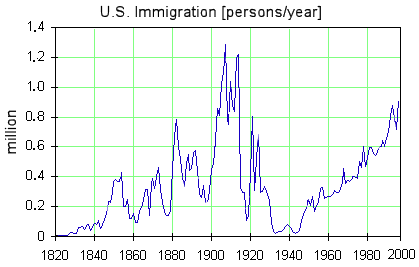
Sorry, the comment form is closed at this time.